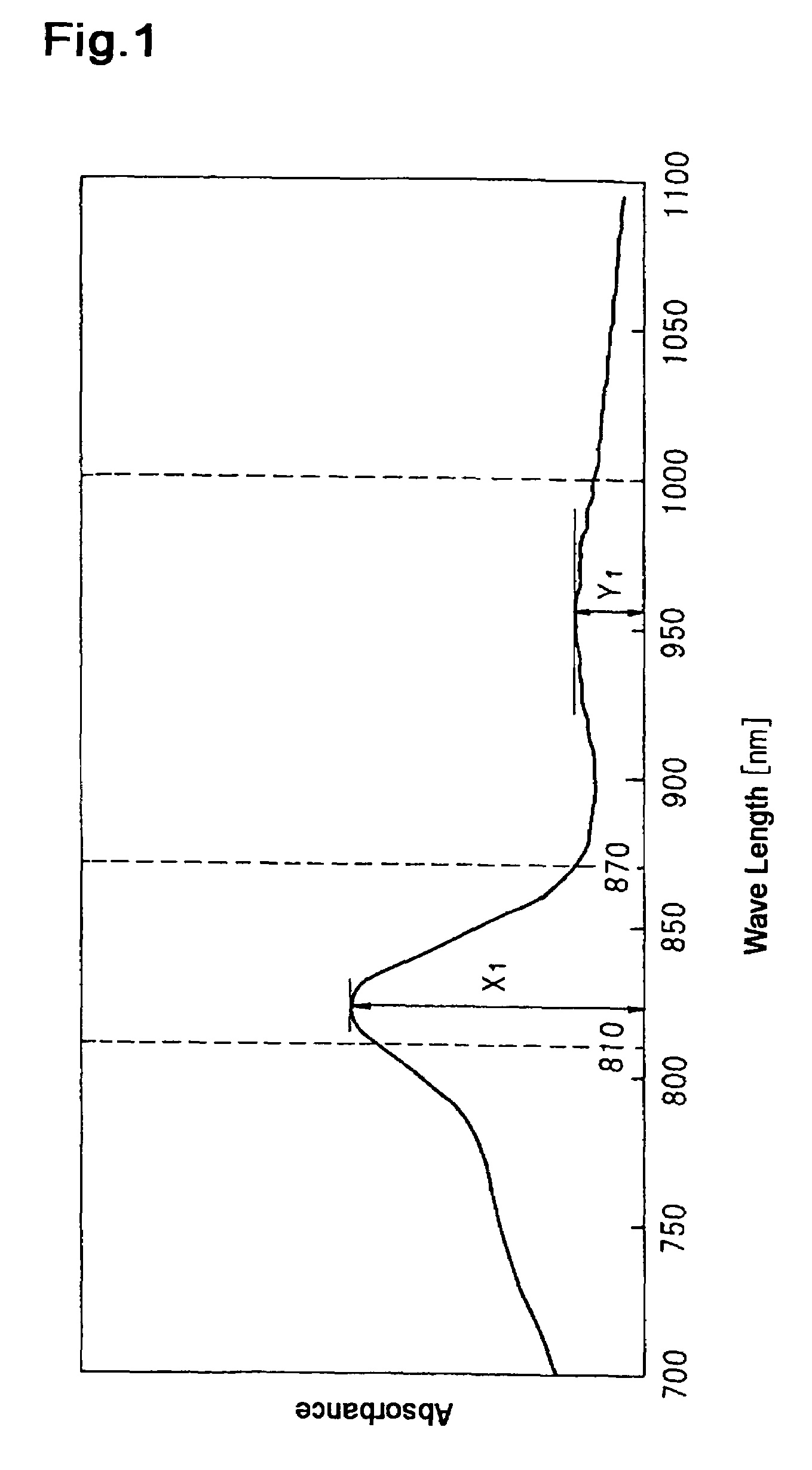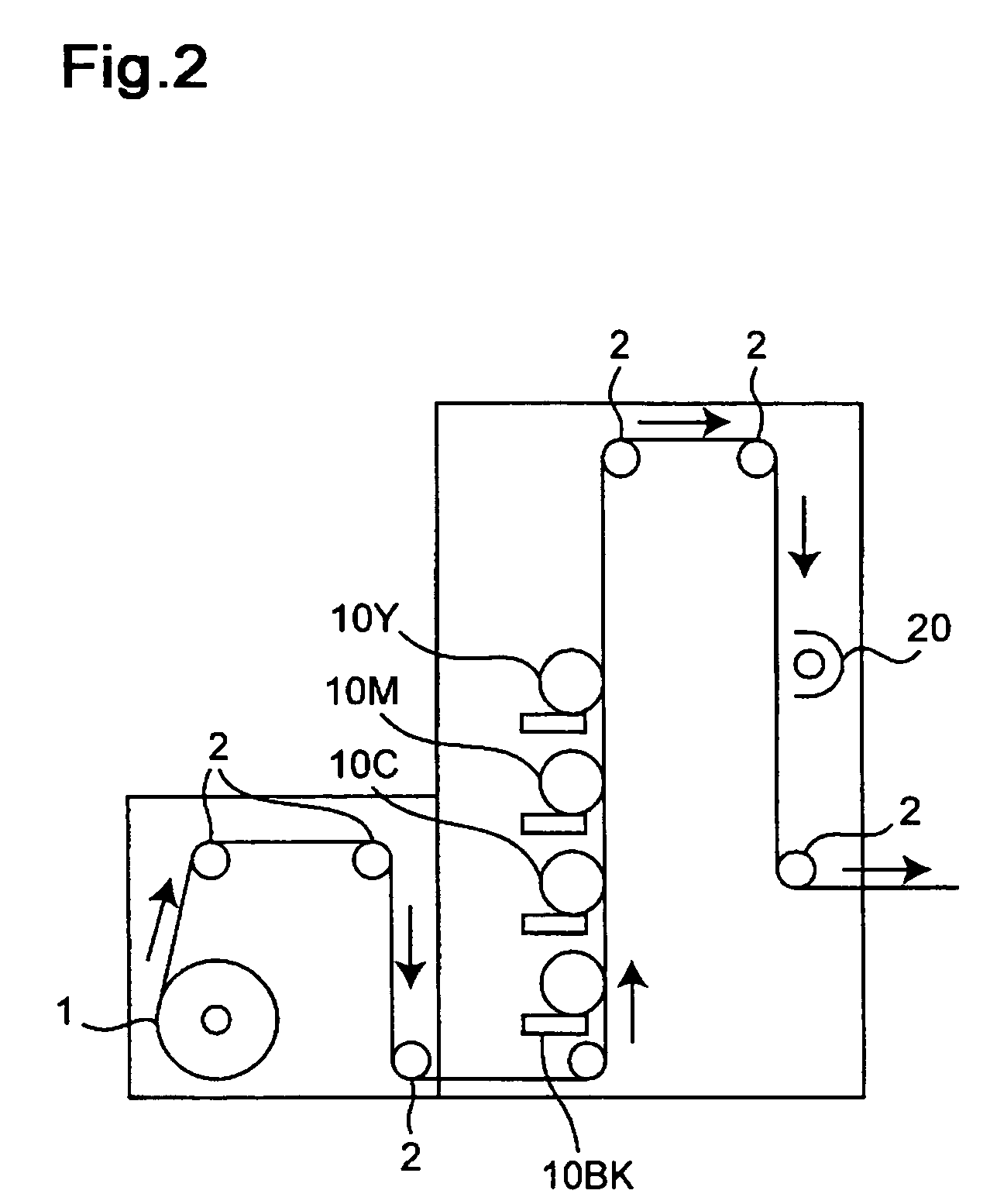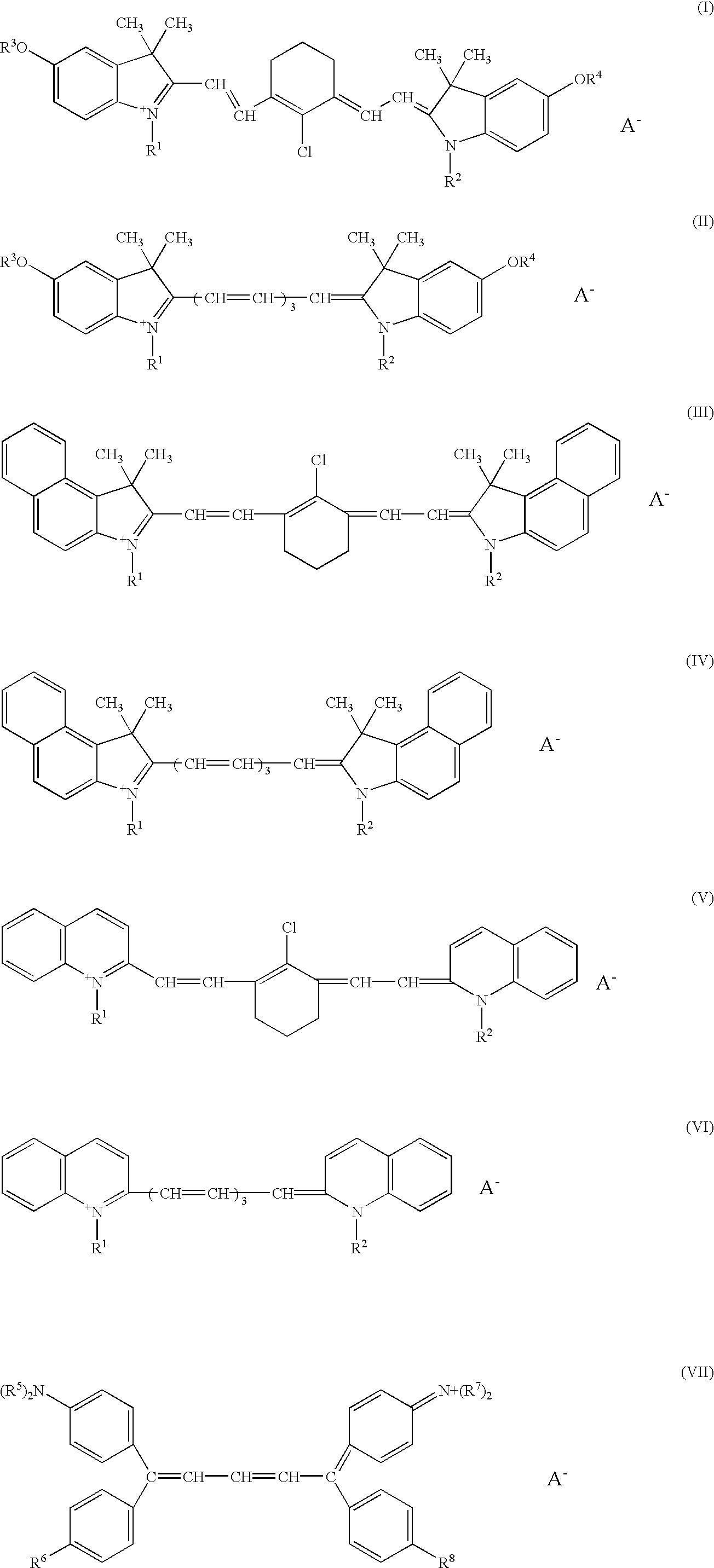Non-contact heat fixing color toner and image-forming method
a color toner and non-contact technology, applied in the direction of electrographic processes, electrographic processes using charge patterns, instruments, etc., can solve the problems of insufficient fixing characteristics, difficult to control the amount of energy to be applied, and great ambient energy dissipation, etc., to achieve a comparatively small amount of toner adhesion, prevent smearing, and superior fixing properties
- Summary
- Abstract
- Description
- Claims
- Application Information
AI Technical Summary
Benefits of technology
Problems solved by technology
Method used
Image
Examples
examples
Production Example of Polyester Resin
[0120]To a four-necked flask provided with a thermometer, a stainless stirring stick, a dropping-type condenser and a nitrogen gas directing tube were loaded an alcohol component and an acid component, which were adjusted to a mole ratio as shown in Table 1, together with a polymerization initiator (dibutyltinoxide). This was allowed to react in a mantle heater by heating at 220° C. while being stirred under a nitrogen gas flow. Here, the progress of the reaction was followed by measuring its acid value. At the time of reaching a predetermined acid value, the reaction was completed, and this was cooled to room temperature; thus, polyester resins H1, L and H2 were obtained. Each of polyester resins was coarsely pulverized into not more than 1 mm, and was used to manufacture toners shown below. The resulting polyester resins have physical properties, that is, glass transition temperature (Tg), softening point (Tm), acid value, hydroxyl value and TH...
example 17
Emulsion Polymerization Method
[0148]To 10.0 Kg of pure water was put 0.90 kg of sodium n-dodecyl sulfate, and stirred and dissolved. To this solution were gradually added 1.20 kg of C.I. Pigment Red 57-1 (made by Fuji Shikiso K.K.), 0.1 kg of IR absorbing agent B1 and 0.1 kg of IR absorbing agent C, and after having been stirred sufficiently for one hour, this was continuously dispersed for 20 hours by using a sand grinder (medium-type disperser). This solution was prepared as “colorant dispersion solution 1.”
[0149]A solution made from 0.055 kg of sodium dodecylbenzene sulfonate and 4.0 L of ion exchange water was prepared as “anionic surfactant solution A.”
[0150]A solution made from 0.014 kg of nonylphenol polyethylene oxide 10-mol adduct and 4.0 L of ion exchange water was prepared as “nonionic surfactant solution B.” A solution formed by dissolving 223.8 g of potassium persulfate in 12.0 L of ion exchange water was prepared as “initiator solution C.”
[0151]To a 100-L GL (glass lin...
example 18
Suspension Polymerization Method
[0158]Styrene (165 g), n-butyl acrylate (35 g), C.I. Pigment Red 57-1 (10 g)(made by Fuji Shikiso K.K.), IR absorbing agent B1 (1 g), di-t-butyl salicylic acid metal compound (2 g), styrene-methacrylic acid copolymer (8 g) and paraffin wax (20 g) (mp=70° C.) were heated to 60° C., and dissolved and dispersed evenly by a TK homomixer (made by TOKUSYU KIKA KOGYO CO., LTD.) at 12,000 rpm. This was used as a polymerization initiator, and to this was added and dissolved 10 g of 2,2′-azobis(2,4-valeronitrile) so that a polymerizable monomer composition was prepared. Next, to 710 g of ion exchange water was added 450 g of an aqueous solution of 0.1 M sodium phosphate, and to this was gradually added 68 g of 1.0 M calcium chloride while being stirred by a TK homomixer at 13,000 rpm to prepare a suspension in which tricalcium phosphate was dispersed. The above-mentioned polymerizable monomer composition was added to this suspension, and stirred by a TK homomix...
PUM
| Property | Measurement | Unit |
|---|---|---|
| wavelength range | aaaaa | aaaaa |
| wavelength range | aaaaa | aaaaa |
| wavelength range | aaaaa | aaaaa |
Abstract
Description
Claims
Application Information
 Login to View More
Login to View More - R&D
- Intellectual Property
- Life Sciences
- Materials
- Tech Scout
- Unparalleled Data Quality
- Higher Quality Content
- 60% Fewer Hallucinations
Browse by: Latest US Patents, China's latest patents, Technical Efficacy Thesaurus, Application Domain, Technology Topic, Popular Technical Reports.
© 2025 PatSnap. All rights reserved.Legal|Privacy policy|Modern Slavery Act Transparency Statement|Sitemap|About US| Contact US: help@patsnap.com



